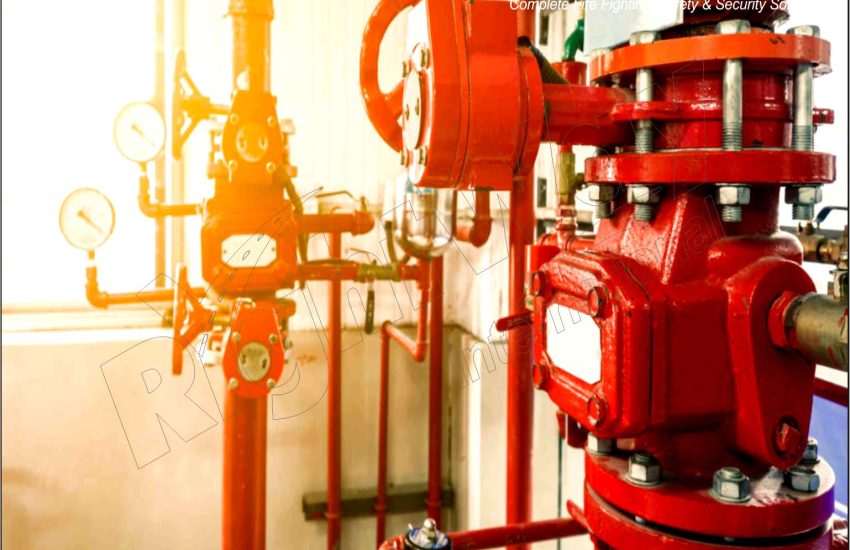Dry Pipe System in Pakistan A dry pipe system is a type of fire sprinkler system that contains pressurized air or nitrogen in the pipes, preventing water from entering until a fire occurs. This system is designed for environments where temperatures may drop below freezing, as it minimizes the risk of water freezing within the pipes. Upon detection of a fire, the release of air pressure allows water to flow into the pipes and discharge from the sprinkler heads.
Key Features of Dry Pipe Systems
- Pressurized Air: Unlike wet pipe systems, dry pipe systems keep air pressure in the pipes. This prevents water from flowing until the system is activated.
- Delayed Activation: Water is only released when a fire triggers the sprinkler heads, making it suitable for areas where freezing is a concern.
- System Components: Key components include the dry pipe valve, air compressor, and specialized sprinkler heads designed for this type of system.
Advantages of Dry Pipe Systems
Dry pipe systems offer several distinct benefits, including:
- Freeze Protection: The primary advantage is the prevention of freezing in cold environments, making them ideal for unheated spaces like warehouses and parking garages.
- Reduced Risk of Water Damage: Since water is not present in the pipes, the risk of accidental discharge and subsequent water damage is minimized.
- Automatic Activation: Like wet pipe systems, dry pipe systems automatically release water when they detect a fire, providing quick suppression.
Applications of Dry Pipe Systems
Dry pipe systems are commonly used in various settings, such as:
- Cold Storage Facilities: These systems are perfect for refrigerated warehouses where temperatures may drop significantly.
- Parking Garages: The risk of freezing pipes makes dry pipe systems an excellent choice for underground or unconditioned parking areas.
- Historic Buildings: In older structures where maintaining a constant temperature is challenging, dry pipe systems help mitigate freezing risks.
Installation Considerations
When planning the installation of a dry pipe system, consider the following:
- Building Codes: Ensure compliance with local fire codes and regulations governing fire suppression systems.
- Proper Sizing: Accurate sizing of pipes and sprinkler heads is crucial to ensure effective water flow during an emergency.
- Air Supply Management: A reliable air supply system is necessary to maintain pressure in the pipes.
Maintenance and Inspection
Regular maintenance is essential for the reliability of dry pipe systems. Key maintenance tasks include:
- Routine Inspections: Regularly check the system for leaks, corrosion, or any signs of damage to components.
- Testing of the Dry Pipe Valve: Conduct periodic tests to ensure the valve operates properly. This helps confirm that the system can deliver water when needed.
- Air Pressure Checks: Monitor the pressure in the pipes to ensure it remains at the required level.
Challenges of Dry Pipe Systems
Despite their benefits, dry pipe systems do have some challenges:
- Complexity: The installation and maintenance can be more complex than wet pipe systems, requiring specialized knowledge.
- Potential Delays in Activation: The time it takes for the dry pipe valve to open and water to flow may result in a slight delay in suppression compared to wet systems.
Conclusion
Dry Pipe System in Pakistan Dry pipe systems are an effective fire protection solution for environments prone to freezing temperatures. Their unique design allows for immediate water discharge upon detection of a fire while minimizing the risk of freezing and water damage. By understanding the features, advantages, and maintenance requirements of dry pipe systems, property owners can make informed decisions to enhance their fire safety measures.


